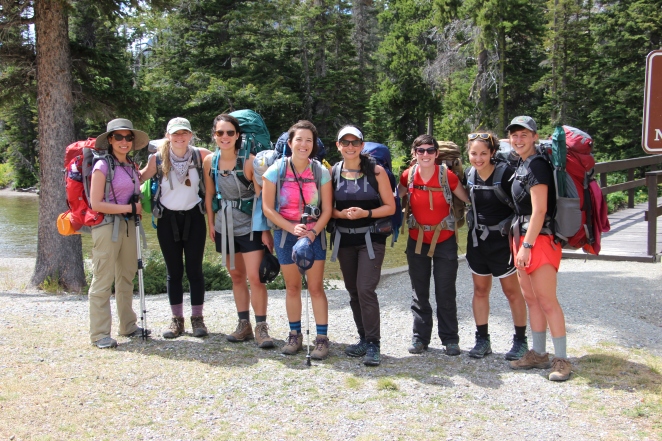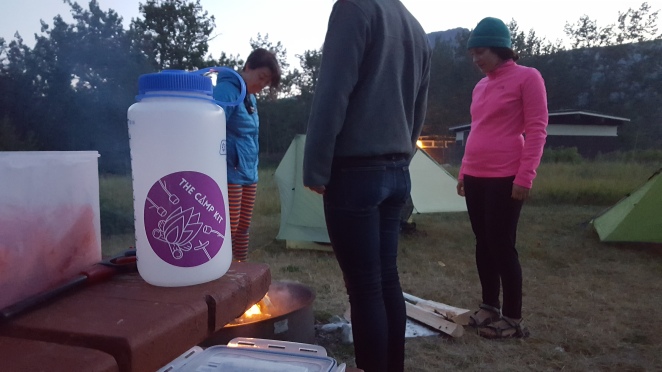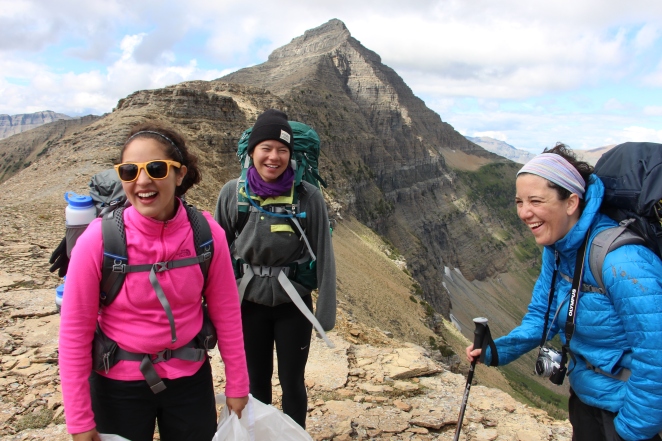What does making the outdoors accessible mean? This question was on my mind when I co-founded Wild Wilderness Women almost two years ago. We wanted to build a group that would empower more women to get outside, and do so in an intentional way that wouldn’t leave any women out. As we’ve grown, it has been a question our board has returned to again and again. How do we make sure we’re fostering an inclusive environment where socio-economic status, race, sexuality, and the variety of other characteristics that a diverse community of women may identify with don’t inadvertently prohibit them from feeling welcome outside?

The urgency of the question for me only grew as our board began planning our inaugural Babes Off the Beaten Path trip—an annual opportunity for Wild Wilderness Women to come together and build community while having an exceptional outdoors experience. For this first year, we’d be taking eight women into the backcountry of Glacier National Park for four days. Three of these women had never been backpacking before.
My mind immediately turned to cost, and the stress I remember feeling around obtaining all the gear I needed when I started diving into the world of backpacking. The truth is that it’s expensive to get started backpacking. Just the cost of the basics adds up fast.
- Backpack: $200
- Sleeping pad: $60
- Sleeping bag: $150
- Tent: $175
- Stove: $50
- Headlamp: $25
- Total: $660
The cost of gear shouldn’t be what stops a woman from trying out backpacking for the first time, and we certainly didn’t want this to be the case for the women who were courageously throwing their fears to the wind and coming with us on this wild ride to Glacier. This is where The Camp Kit came in.

For far less than the price of buying all new gear, The Camp Kit offers easy rentals of everything a newbie may need to try out this great love affair we call backpacking. And, unlike some rental companies, it only sends high-quality gear—the type that you would want to buy for yourself. As a first-timer, this is important. Using gear that is old, smelly, heavy, or otherwise unappealing can affect the way a beginner internalizes the experience.
When Tara first joined Wild Wilderness Women, she didn’t have much experience camping. Day hikes, paddling on the Potomac, or biking along local trails were more up her alley. But, strapping a pack on your back, sleeping near wild animals, and spending multiple nights in a tent? She had some hesitations. However, when we announced our trip to Glacier, Tara excitedly signed up. She quickly embraced the opportunity to push her limits in a way that so beautifully encapsulated the ethos of our group’s mission. This was something we wanted to champion.

Photo Credit: Nicole Lesnett
Tara headed out on the Dawson-Pitamakan Trail with us this past August thanks to a 1-person backpacking kit from The Camp Kit. She got to experience what backpacking was all about without committing to dropping hundreds of dollars on gear. And, I can’t imagine what our trip would’ve been like if something like the cost of gear had held Tara back from joining us.
Tara brought incredible spirit to the group—encouraging all of us when we began to feel tired, letting us share in her excitement of seeing her first moose, and being the first to want to learn new skills, such as bear bag hanging or backcountry dishwashing. I asked her at the end of the trip if she thought backpacking was something she’d do again, and, guess what? Even with aches in the feet and stinky armpits at the end of the trail, her answer was—yes!
Accessibility in the outdoors is important across a variety of spectrums. For me, the financial barrier of getting started is one I feel particularly passionate about breaking down. I’m grateful for options like The Camp Kit that help do just that.
XO—Korrin, Co-founder & President
—
Header photo credit: Nicole Lesnett
